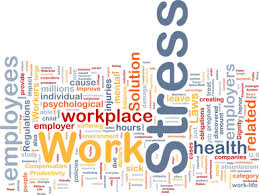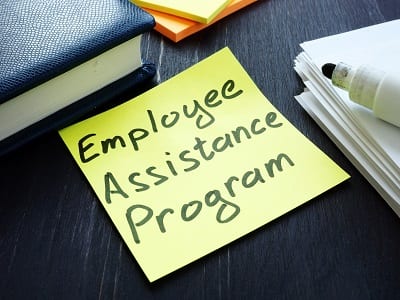When it comes to employee assistance programs (EAPs), there is no one-size-fits-all solution. Every business is different, and every employee has different needs. That said, there are some basic steps that all businesses can take to create an effective EAP plan. In this blog post, we will discuss the four key components of an effective EAP plan: prevention, early intervention, treatment, and recovery. We will also offer tips on how to implement each component in your business.
What Is EAP?
An employee assistance program is a confidential counseling and referral service that helps employees deal with personal and work-related problems. EAPs can provide individual counseling, support groups, workshops, online resources, and referrals to community resources. Many businesses offer EAPs as part of their benefits package.
EAP, though a relatively recent concept, is an effective way to improve employee productivity and morale. In one study, businesses that implemented an EAP saw a 28% reduction in absenteeism and a 32% reduction in health care costs.
Why Is EAP Important?

EAPs are important because they help employees stay healthy and productive. Employees who are struggling with personal or work-related problems are more likely to experience absenteeism, presenteeism, reduced job satisfaction, and decreased productivity. By offering an EAP, businesses can help employees address these problems before they lead to larger issues.
Other benefits also include :
- increased employee retention
- improved morale
- better work/life balance
- improved communication between employees and managers
- increased job satisfaction
- decreased turnover
- reduced stress levels
How to Create an Effective EAP Plan

When thinking of creating an EAP plan that suits your company’s needs and budget, consider the following steps:
Assessment Conduction
The first step is to assess your company’s needs. What type of problems do your employees tend to experience? Do you have a high rate of absenteeism? Do you have a lot of employees who are struggling with work/life balance? Once you have identified the needs of your business, you can begin to create a plan that will address those needs.
Obtaining Results And Management Support
The second step is to obtain results and management support. To do this, you will need to collect data on the effectiveness of your EAP. You can do this by surveying employees before and after they use the EAP, tracking absenteeism rates, and measuring productivity levels. Once you have collected this data, you can present it to management and show them how the EAP is benefiting your business.
Establishing A Committee
The third step is to establish a committee. This committee will be responsible for overseeing the EAP and ensuring that it is being used effectively. The members of the committee should be senior-level managers who have an interest in employee well-being. It is also important to have a diverse committee, as this will help ensure that all employees feel comfortable using the EAP.
Develop goals and objectives
The fourth and final step is to develop goals and objectives. This will help you track the progress of your EAP and make sure that it is meeting the needs of your business. This step is especially important if you are seeking management support for your EAP. Keep in mind that there is no one-size-fits-all solution when it comes to creating an EAP plan. Every business is different, and every employee has different needs.
Allotting budget
Be sure to factor in the cost of implementing and maintaining your EAP. The price will vary depending on the type of EAP you choose and the size of your business. You may also want to consider offering additional benefits, such as health insurance, to employees who use the EAP. It can also help in negotiating with insurance providers.
Selecting rewards and incentives
Incentives and rewards are a great way to encourage employees to use the EAP. You can offer bonuses, gift cards, or paid time off for employees who participate in the EAP. You can also provide discounts on gym memberships or other health-related products and services.
Communicate the plans
The final step is to communicate the plans to employees. Be sure to let them know what the EAP is, how it can help them, and how to access it. You should also provide a way for employees to give feedback on the EAP so that you can improve it.
Evaluation
Once your EAP is up and running, it’s important to evaluate its effectiveness. You can do this by surveying employees before and after they use the EAP, tracking absenteeism rates, and measuring productivity levels. By collecting this data, you can show management how the EAP is benefiting your business.
If you follow these steps, you can create an employee assistance program that will keep your employees healthy and productive. Implementing an EAP can be a challenge, but it’s worth it when you see the results. By taking the time to create a custom plan and communicate with employees, you can make sure that your EAP is successful.
Four Key Components Of EAPs

There are four key components of an effective EAP plan: prevention, early intervention, treatment, and recovery. Let’s take a closer look at each component:
Prevention
Prevention is key to an effective EAP plan. Businesses should provide employees with resources that will help them prevent problems before they start. For example, businesses can offer workshops on stress management or time management. Employees can also be given access to online resources, such as articles and tips on how to manage work-life balance.
Early Intervention
Early intervention is crucial for preventing minor problems from becoming major ones. Businesses should put procedures in place so that employees can get help as soon as possible after experiencing a problem. For example, businesses can offer employees 24/seven access to counseling services or create an employee support group.
Treatment
Once a problem has been identified, businesses should provide employees with resources for treatment. Businesses can offer on-site counseling services or refer employees to community resources. Employees should also be given information about how to access mental health services if needed.
Recovery
The final stage of an effective EAP plan is recovery. This is when businesses help employees get back on track after experiencing a problem. Businesses can offer return-to-work programs, job coaching, and other support services. Employees should also be given information about how to access community resources, such as support groups or financial assistance.
Implementing An EAP Plan

Now that you know the four key components of an effective EAP plan, it’s time to start implementing one in your business. Here are a few tips to get you started:
- Choose a provider: The first step is to choose an EAP provider. Make sure to select a provider that offers confidential counseling services and 24/seven support.
- Create a budget: Once you’ve selected a provider, create a budget for your EAP program. Be sure to include funding for prevention, early intervention, treatment, and recovery services.
- Develop policies and procedures: Next, develop policies and procedures for your EAP program. Include information on how employees can access services, what type of confidential information will be shared, and how disputes will be resolved.
- Train employees and managers: Once your EAP program is up and running, be sure to train employees and managers on how to use it. This will help ensure that your program is used effectively and efficiently.
- Monitor the program: Finally, monitor your EAP program on an ongoing basis. Evaluate the effectiveness of services and make changes as needed.
By following these tips, you can create an effective EAP plan that will help keep your employees healthy and productive.
Conclusion
It becomes easier to get the ball rolling once you have a plan in place. To implement your EAP, start by surveying employees to see what type of problems they are experiencing. Once you have this information, you can begin to create a custom plan that will address those needs. Be sure to communicate the plans to employees and provide a way for them to give feedback. Finally, establish a committee to oversee the EAP and track its progress. By taking these steps, you can create an EAP that will benefit both your employees and your business. MantraCare Wellness offers assistance and guidance for EAP and its successful implementation. Contact us today for bookings and start with your employees’ wellness journey today!
A Word From MantraCare Wellness
Employee wellness programs are the key to improving employee motivation, productivity, and retention. At MantraCare Wellness, we have a team of health experts, counselors, and coaches who serve corporate employees with 10+ wellbeing programs including EAP, Employee Diabetes Reversal, Corporate MSK, PCOS, Employee Fitness, Corporate Yoga, Employee meditation, and Employee Smoking Cessation.



